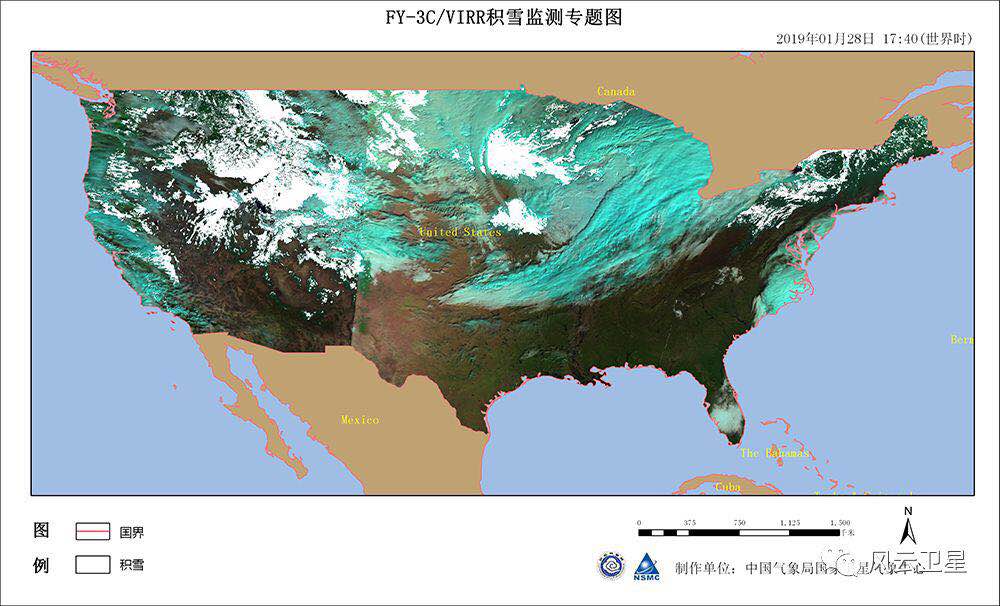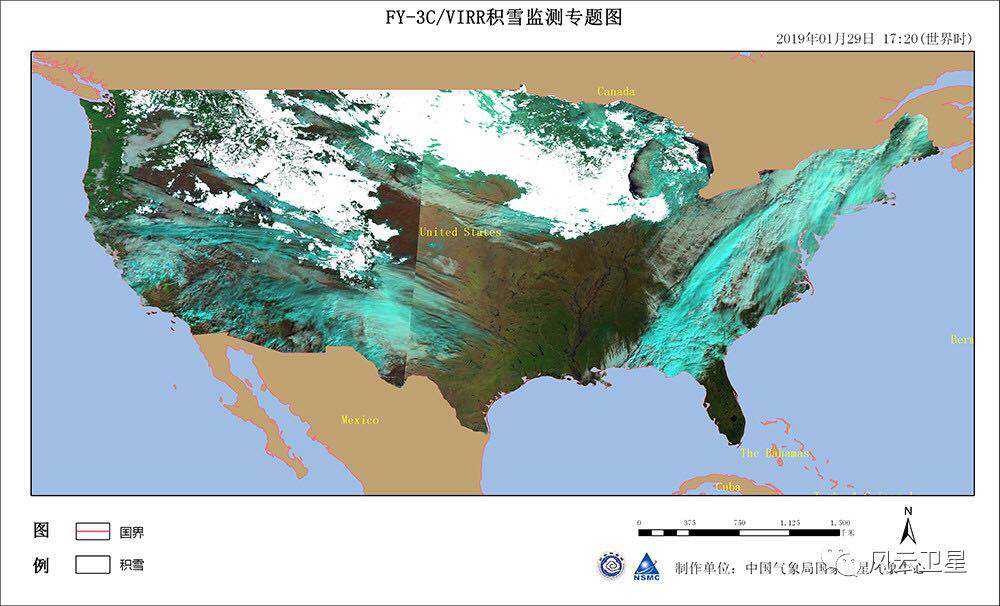When temperatures drop below the freezing point, and there is sufficient water in clouds, it can result in snow. Snow storms can quickly cause disruption to inhabited areas if the ground temperature is cold enough for the snow to settle.
If temperatures remain low, the snow remains unless physically removed and compacted snow underfoot forms into ice. Ice - on the surface of water or in compacted snow - makes for treacherous conditions and can result in injuries if people slip and fall. Water sources may freeze, cutting off access for residents to clean water or heat.

Fig. Heavy snow in USA on January 28, 2019 by FY-3C.

Fig. Heavy snow in USA on January 29, 2019 by FY-3C.

Fig. Sea ice influenced the Arctic routes in October, 2016 by FY-3B.

Fig. Sea ice in Bohai Sea on January 10, 2011 by FY-3B.

Fig. Ice crack monitoring in Arctic region on June 4, 2008 by FY-3A.